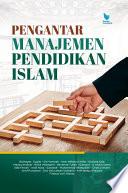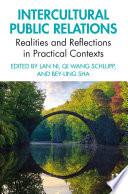
SAINS, KEPUSTAKAAN, DAN PERPUSTAKAAN DALAM SEJARAH DAN PERADABAN ISLAM
KLASIK, PERTENGAHAN, MODERN
“Dalam historiografi sejarah perpustakaan, buku ni tercatat sebagai salah satu buku awal yang membahas sejarah perpustakaan Islam, termasuk sejarah perpustakaan Islam di Indonesia, jumlahnya dapat dihitung dari jumlah jari tangan. Saya amat menghargai buku ini karena merupakan gabungan Ilmu Sejarah dan Ilmu Perpustakaan di Indonesia yang mampu memperkaya khazanah kepustakawanan Indonesia terutama aspek sejarahnya. Buku ini sangat disarankan untuk digunakan di lembaga pendidikan pustakawan, juga bagi pustakawan dan masyarakat yang ingin mengetahui lebih mendalam tentang sejarah perpustakaan Islam sejak abad 7 hingga sekarang.” ~ Prof. Sulistyo-Basuki, Ph.D., Guru Besar Ilmu Perpustakaan “Masih sangat jarang ditemukan buku-buku tentang perpustakaan Islam yang ditulis oleh penulis atau sarjana Muslim. Keperluan akan literatur yang secara khusus dan spesifik membahas tentang ilmu perpustakaan Islam dengan seluk beluk penerapan dan aplikasinya sangat urgen dan mendesak saat ini. Kehadiran buku ini memilki arti yang sangat penting dan strategis dalam arti ia mengisi kelangkaan tersedianya buku-buku perpustakaan Islam itu. Buku ini ditulis oleh seorang sarjana Muslim yang bergelar doktor, ahli sejarah dan historiografi Islam, mendalami kebudayaan dan peradaban Islam dan–tentu saja–menguasai ilmu kepustakaan dan perpustakaan ilmu-ilmu keislaman yang memang menjadi minat studinya. Di dalam buku itu, penulisnya menyajikan banyak data dan fakta yang perlu diketahui tentang awal pertumbuhan, pekembangan, kemajuan, kematangan, dan kemunduran kepustakaan dan perpustkaan Islam. Mengambil hikmah dan pembelajaran dari masa lalu, tentu kebangkitan dan kemajuan (kembali) kepustakaan dan perpustakaan Islam sangat diharapkan dan dinantikan pada masa sekarang ini.” ~ Prof. Dr. H. Faisal Ismail, M.A., Guru Besar Sejarah Pemikiran dan Peradaban Islam UIN Sunan Kalijaga
- ISBN 13 : 6027412186
- ISBN 10 : 9786027412187
- Judul : SAINS, KEPUSTAKAAN, DAN PERPUSTAKAAN DALAM SEJARAH DAN PERADABAN ISLAM
- Sub Judul : KLASIK, PERTENGAHAN, MODERN
- Pengarang : Dr. Nurul Hak, M.Hum.,
- Kategori : Architecture
- Penerbit : Maghza Pustaka
- Bahasa : id
- Tahun : 2022
- Halaman : 302
- Google Book : https://play.google.com/store/books/details?id=Z65_EAAAQBAJ&source=gbs_api
-
Ketersediaan :
Difusi kebudayaan itu diperkuat oleh motif kecintaan terhadap ilmu pengetahuan dari berbagai lapisan sosial tersebut, yang tidak hanya menjadikan buku sebagai sebuah industri ekonomi, tetapi aset kebudayaan dan peradaban Islam yang ...









